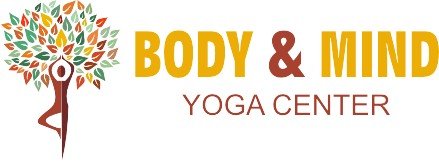Pregnancy is a beautiful journey filled with excitement, changes, and a need for extra self-care. Among the many practices that support a healthy pregnancy, prenatal yoga stands out for its ability to nourish the mind, body, and spirit. But many expectant mothers wonder: Is prenatal yoga safe for all trimesters? In this blog, we dive deep into expert insights, safety guidelines, and trimester-specific advice to help you practice confidently throughout your pregnancy.
What is Prenatal Yoga?
Prenatal yoga is a specially designed form of yoga tailored to the needs of pregnant women. Unlike regular yoga classes, prenatal yoga focuses on gentle stretches, yogic breathing techniques, and relaxation methods that accommodate the physical and emotional changes of pregnancy.
Key benefits of prenatal yoga include:
- Enhancing flexibility and strength needed for childbirth
- Reducing pregnancy discomforts like back pain, nausea, and fatigue
- Improving sleep and reducing stress and anxiety
- Encouraging better breathing techniques, useful during labor
Prenatal yoga is not just physical exercise — it’s a holistic practice supporting emotional well-being, body awareness, and connection with the growing baby.
Is Prenatal Yoga Safe Throughout Pregnancy?
The good news is that prenatal yoga is generally considered safe across all three trimesters, provided it is practiced correctly and under professional guidance.
Most healthcare providers encourage gentle, mindful exercise during pregnancy, and prenatal yoga fits perfectly into this recommendation. However, every pregnancy is different. That’s why it’s important to:
- Consult your doctor before beginning any yoga program
- Inform your instructor about your pregnancy and how far along you are
- Listen to your body and modify poses when necessary
The style and intensity of the practice will naturally adjust as the pregnancy progresses. Always prioritize comfort, safety, and the well-being of both you and your baby.
First Trimester of Pregnancy (Weeks 1–12)
The first trimester marks the beginning of an extraordinary journey. However, it can also be a physically and emotionally challenging time. Hormonal shifts are at their peak, and many women experience symptoms such as nausea, fatigue, dizziness, mood swings, and tender breasts. Some may also have anxiety about the viability of the pregnancy.
How Prenatal Yoga Helps: During the first trimester, the body is already hard at work developing the placenta and supporting the early stages of fetal growth. Gentle prenatal yoga practices can help expectant mothers manage stress, promote emotional balance, and ease physical tension caused by hormonal changes.
Key Focus Areas:
- Gentle Breathwork (Pranayama): Deep, conscious breathing helps improve oxygen flow, calms the nervous system, and reduces anxiety.
- Restorative Poses: Light stretching and supported postures nurture the body without adding stress.
- Mindfulness and Meditation: Mental clarity and stress reduction are particularly important during this delicate phase.
You might also like to read : 10 Prenatal Yoga Poses For First Trimester Of Pregnancy
Safety Tips for the First Trimester:
- Avoid intense heat (no hot yoga).
- Skip poses that involve deep abdominal engagement, extreme backbends, or forceful twists.
- Prioritize rest when needed; it’s completely okay to skip or shorten sessions based on how you feel.
- Focus on establishing a mindful connection between breath, body, and baby.
Expert Insight:
In the first trimester, “less is more” is a wise approach. It’s not about building strength yet — it’s about honoring the incredible internal work your body is doing behind the scenes.
Second Trimester of Pregnancy (Weeks 13–26): Building Strength and Stability
The second trimester is often described as the “honeymoon phase” of pregnancy. Many women find their energy levels returning, morning sickness easing, and mood improving. Physical changes, such as a growing belly and shifting posture, become more noticeable.
How Prenatal Yoga Helps: This phase is ideal for building stamina, flexibility, and strength — preparing the body to support a growing baby and eventually for labor and delivery. Prenatal yoga during the second trimester focuses on:
- Strengthening the legs, hips, and lower back
- Maintaining spinal alignment and balance
- Promoting circulation to reduce swelling
Key Focus Areas:
- Standing Poses (like Warrior II and Tree Pose): Help strengthen the legs and improve balance.
- Hip Openers: Gentle stretches in the hips create space for the growing uterus and prepare for childbirth.
- Heart-Opening Poses: Gentle backbends, supported by props, open the chest and counteract the rounded posture caused by a heavier bustline.
You might also like to read : 5 Prenatal Yoga Poses For Second Trimester
Safety Tips for the Second Trimester:
- Avoid lying flat on your back for extended periods, as it may compress the vena cava (a major vein) and restrict blood flow.
- Be mindful of your balance as your center of gravity shifts.
- Modify deeper poses with blocks or bolsters.
- Begin practicing pelvic floor awareness through light Kegel exercises.
Expert Insight:
In the second trimester, the focus shifts from simply adapting to pregnancy to actively preparing for the physical demands ahead. Strengthening now can ease discomfort later and support easier labor.
Third Trimester of Pregnancy (Weeks 27–40): Embracing Ease and Preparation
The third trimester is a time of anticipation and significant physical changes. As the baby grows larger, women often experience increased back pain, swelling, shortness of breath, heartburn, and general discomfort. Fatigue typically returns as the body prepares for birth.
How Prenatal Yoga Helps: Prenatal yoga during the third trimester centers on comfort, relaxation, and preparation for labor. The goal is to keep the body mobile, ease aches and pains, promote optimal fetal positioning, and build mental resilience for the birth process.
Key Focus Areas:
- Gentle, Supported Postures: Positions that promote ease, comfort, and open the hips without strain.
- Breath Awareness (Pranayama): Deep, rhythmic breathing can help manage discomfort and later assist in coping with contractions during labor.
- Labor Preparation Techniques: Positions like squats, seated pelvic tilts, and butterfly pose are excellent for strengthening and opening the pelvis.
You might also like to read : 10 Prenatal Yoga Poses For Third Trimester Of Pregnancy
Safety Tips for the Third Trimester:
- Practice near a wall or use props for extra stability.
- Move slowly and mindfully to avoid joint strain (pregnancy hormones like relaxin make joints looser).
- Avoid deep backbends, inversions, and any pose that challenges balance too aggressively.
- Use plenty of cushions, blocks, and bolsters to support the belly and lower back.
Expert Insight:
In the third trimester, the goal is not to push limits, but to create spaciousness, calm, and trust in your body’s natural wisdom. Practices like visualizations, gentle stretching, and focused breathing become powerful tools to carry into labor and birth.
Expert Tips for a Safe Prenatal Yoga Practice
- Always Listen to Your Body: If something doesn’t feel right, it probably isn’t. Modify or skip poses if necessary.
- Choose Certified Prenatal Yoga Instructors: Look for teachers specifically trained in prenatal yoga to ensure you’re receiving appropriate guidance.
- Stay Hydrated: Pregnancy increases your hydration needs. Drink water before, during, and after class.
- Avoid Overheating: High temperatures can be risky during pregnancy. Practice in well-ventilated, comfortably cool spaces.
- Use Props: Bolsters, straps, and blocks can help you adapt poses safely and comfortably.
Final Thoughts: Embracing a Safe, Nourishing Journey
Prenatal yoga can be an incredible tool to support a healthy, mindful pregnancy. With the right modifications and professional guidance, prenatal yoga is safe and beneficial across all trimesters. It nurtures both body and mind, reduces common pregnancy discomforts, and helps you connect deeply with the beautiful changes happening inside you. As always, approach your practice with love, patience, and a focus on safety. Your body is performing a miracle — honor it with gentle, nourishing movements every step of the way.
Join us at Body and Mind Yoga Center, where our specialized prenatal yoga classes in Dubai provide a nurturing environment for mothers-to-be to connect with their bodies and their growing babies.


